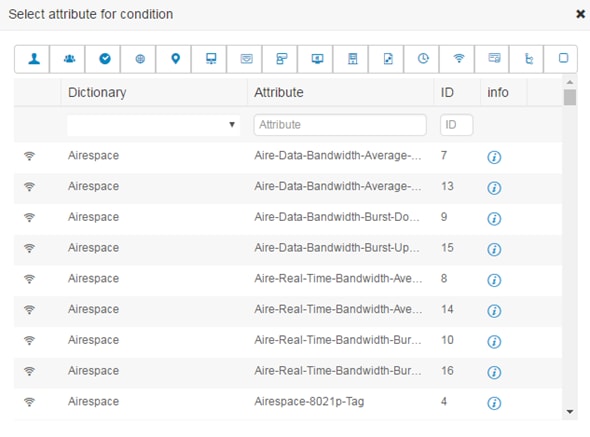

- Cisco ise 2.4 policy sets update#
- Cisco ise 2.4 policy sets windows 10#
- Cisco ise 2.4 policy sets password#
Profiling Policies created by Cisco are marked as Cisco Provided, as seen in the image below. Updating Profiling Policies only affect the policies created by Cisco and not those that you have created yourself.
Cisco ise 2.4 policy sets update#
There are two ways to update your Profiling Policies and that is either online by letting ISE download the updates itself, or offline by letting you as the administrator download an update file from Cisco and then upload it to the ISE deployment.
Cisco ise 2.4 policy sets windows 10#
Some example of Profiling Policies are Apple-iPads, Windows 10 Workstations, HP Printers, Avaya-Phones and so on.Ĭisco regularly publishes updates to these Profiling Policies since new devices appear on the market every now and then and MAC-addresses’ “ OUI” (the first half of the MAC-addresses which tells you who manufactured the devices) also changes from time to time as blocks of MAC-address series are distributed and sold. There are hundreds of Profiling Policies that contain certain conditions to be met, and if a device all or some of those conditions, the device will be profiled (classified) as that type of device. ISE is able to automatically profile (classify) devices connected to your network by looking at certain key attributes that it can collect using several methods like RADIUS Accounting, DHCP, SNMP, CDP/LLDP, and much more. Update Profiling Policies using the Profiler Feed Service To enable ISE version 2.4 to show the actual usernames in these scenarios, log into the GUI of ISE and navigate to Administration > System > Settings > RADIUS and check the box for Disclose invalid usernames. In later versions of ISE (2.6 and later) you can permanently chose to disclose usernames. Unfortunately, in ISE version 2.4 (and maybe earlier releases) you can only disclose (unmask) these usernames for 30 minutes at a time. Seems like extra headache with little gain, at least to me. I have not seen any crystal clear arguments as to why the masking of the username is enabled by default, but I am not a fan of hiding the username for authentication attempts, especially during the configuration and implementation phases of an ISE deployment. In some versions of ISE, the usernames can also be masked as just “USERNAME” or “USERNAME\USERNAME” in all big letters, instead of showing who is really trying to connect to the network. Displaying INVALID instead of the actual username is enabled by default, so you will need to change this setting if you want to see the actual username for these types of failed authentications. Instead of showing the username of the authentication attempts, the ISE Live Log will in this case simply display “ INVALID” as the username. Since a few years back, ISE introduced a feature that hides the username of an authentication attempts if the username is not found in any of the Identity Stores that ISE has been configured to look in.
Cisco ise 2.4 policy sets password#
Scroll down until you see the section Password Lifetime and uncheck the checkboxes here.ĭisclose “INVALID” Usernames in ISE Live Log Navigate to Administration > System > Admin Access > Authentication > Password Policy. While you should definitely change your local Administrator password from time to time, this setting definitely has done more bad than good, in my experience. You can change this behavior from the GUI of ISE by editing the Password Policy. This means that the account can be used to log into the ISE GUI, which you reach via a web browser and do pretty much all of the actual configuration in.īy default, this Administrator account expires after 45 days, which can leave you locked out of you ISE-node, if you are not careful.

This account is used for accessing the CLI of the node (via SSH, console or VMware console, for example) and the account name and password is copied over to the ISE application itself as an Administrator account for the ISE application as well.

The default name for this account is “admin” unless you pick something else manually. I will keep adding to this list as time goes by, if I find something that I think would be considered a general good practice.Īpply these configurations at your own risk - only you know your environment !!ĭisable Administrator Password Expirationĭuring the installation of an ISE-node, you are asked to configure an Administrator account during the initial setup. Most of these “good practices” can be applied to ISE 2.4 and above. Always double check these settings if you are configuring them in a live production environment, as to not cause an outage of some kind. The following settings are a collection of daily discoveries and tips from various Cisco Live presentations in regards to optimizing your Cisco ISE deployment.


 0 kommentar(er)
0 kommentar(er)
